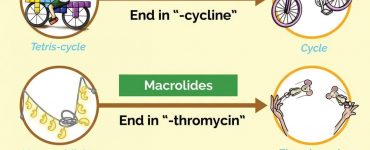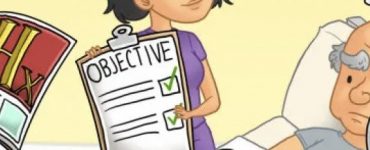Medical mnemonics can be invaluable tools for students navigating the complexities of medical education. These clever memory aids can simplify the retention of essential information. Let’s explore some of the most common mnemonics for medical students that can make studying more efficient and even enjoyable.
How medical mnemonics can help you as a med student

As a medical student, mnemonics can be game changers when it comes to mastering complex topics. Mnemonics are scientifically proven to make learning easier by turning complicated information into simple memorable phrases or pictures. They can help you quickly recall key facts such as anatomy details or drug classifications during high pressure situations like exams or clinical rounds.
For medical students, mnemonics can save time, reduce stress and make studying more efficient, giving you a reliable way to retain critical information throughout your journey in medical school.
7 Medical mnemonics every med student should know
Looking for a handy list of medical mnemonics to boost your memory? Here are 7 must-know medical mnemonics examples that every student can use to ace their studies.
MUDPILES – Anion Gap Acidosis

Methanol: Commonly found in commercial solvents. Can cause anion gap acidosis.
Uremia: A buildup of waste products in the blood due to kidney failure
Diabetic ketoacidosis (DKA): A serious complication of diabetes where the body produces excess ketones.
Propylene Glycol: A food additive widely used in tobacco products and pharmaceuticals.
Isoniazid or Iron: Iron can cause acidosis when ingested in excess.
Lactic Acidosis: Results from dehydration with deficient nutritional resources forcing the body into anaerobic metabolism.
Ethylene glycol: Found in anti-freeze, its ingestion can lead to severe acidosis.
Salicylates: Overdose of aspirin or similar drugs can cause acidosis.
[Check out Picmonic’s MUDPILES Mnemonic]
SIG E CAPS – Major Depressive Disorder

Sleep Problems: Insomnia or hypersomnia.
Interest Deficit: A lack of interest or pleasure in activities.
Guilt or Worthlessness: Feelings of excessive guilt or worthlessness.
Energy Loss or Fatigue: Low or non existent levels of energy.
Concentration Difficulty: Trouble focusing or making decisions.
Appetite Changes: Significant weight loss or gain due to changes in appetite.
Psychomotor Retardation or Agitation: Slowed or decreased speech and movements.
Suicidal Ideation: Recurrent thoughts of death or suicide.
[Check out Picmonic’s SIG E CAPS Mnemonic]
AEIOU – Indications for Urgent Dialysis

Acidosis: When pH falls below 7.1 intracellular metabolism may cease to function and cell death can occur.
Electrolyte Imbalances: Imbalances in Na, K, Cl, and HCO3 among others, can lead to symptomatic changes.
Ingestion: Ingestions of substances such as toxic alcohols, lithium, methanol and aspirin.
Overload (Volume): Fluid overload that cannot be managed with diuretics.
Uremia: High concentrations of urea can lead to abnormalities, such as encephalitis, pericarditis, and coagulopathies due to platelet dysfunction.
[Check out Picmonic’s AEIOU Mnemonic]
GET SMASHHED – Acute Pancreatitis Causes

Gallstones: The most common cause of Pancreatitis, where stones block the bile duct and affect the pancreas.
Ethanol: Ingestion of large amounts of alcohol can lead to acute pancreatitis.
Trauma: Abdominal injury can damage the pancreas.
Steroids: Long term use of corticosteroids can lead to pancreatitis.
Mumps: Viral infections like mumps can lead to pancreatitis.
Autoimmune: Autoimmune pancreatitis is a common presentation of acute pancreatitis.
Scorpion sting: Scorpion stings can lead to a transient, self-limiting acute pancreatitis.
Hypercalcemia: High calcium can trigger inflammation.
Hypertriglyceridemia: High lipid levels can trigger inflammation.
ERCP: Can lead to acute pancreatitis, as it is a procedure which involves cannulation or injection of the pancreatic duct.
Drugs: Certain medications, such as azathioprine or diuretics can induce pancreatitis.
[Check out Picmonic’s GET SMASHHED Mnemonic]
6 P’s – Compartment Syndrome Assessment

Pain: Severe and disproportionate pain with passive movement of the affected limb.
Pressure: Increased pressure can lead to edema or bleeding.
Paresthesia: Tingling, numbness, or a ‘pins and needles’ sensation.
Paralysis: Loss of function or inability to move the affected limb.
Pulselessness: Weak or absent pulse in the affected area.
Pallor: Pale or ashen skin due to reduced blood flow.
[Check out Picmonic’s 6 P’s Mnemonic]
6 F’s – Gallbladder Inflammation

Female: Women are more likely to develop gallbladder disease due to hormonal factors.
Fair: Fair-skinned individuals are more likely to develop gallbladder disease.
Fat: Obesity is a major risk factor for gallstones and gallbladder inflammation.
Fertile: Women who have had multiple pregnancies are at increased risk.
Forty: People over the age of 40 are at higher risk.
Flatulence: A person with an inflamed gallbladder can develop an intolerance to fatty foods, leading to flatulence.
[Check out Picmonic’s 6F’s Mnemonic]
How to use Picmonic to learn medical mnemonics
Now that you have some medical mnemonics in your toolkit, use Picmonic to bring complex medical concepts to life with fun, memorable characters in short interactive videos that tell a story.
Join over a million students who use Picmonic to learn, quiz themselves, and study on the go with over 1,800 medical mnemonics created specifically for medical students. You can even customize or create your own mnemonics to personalize your study experience.













